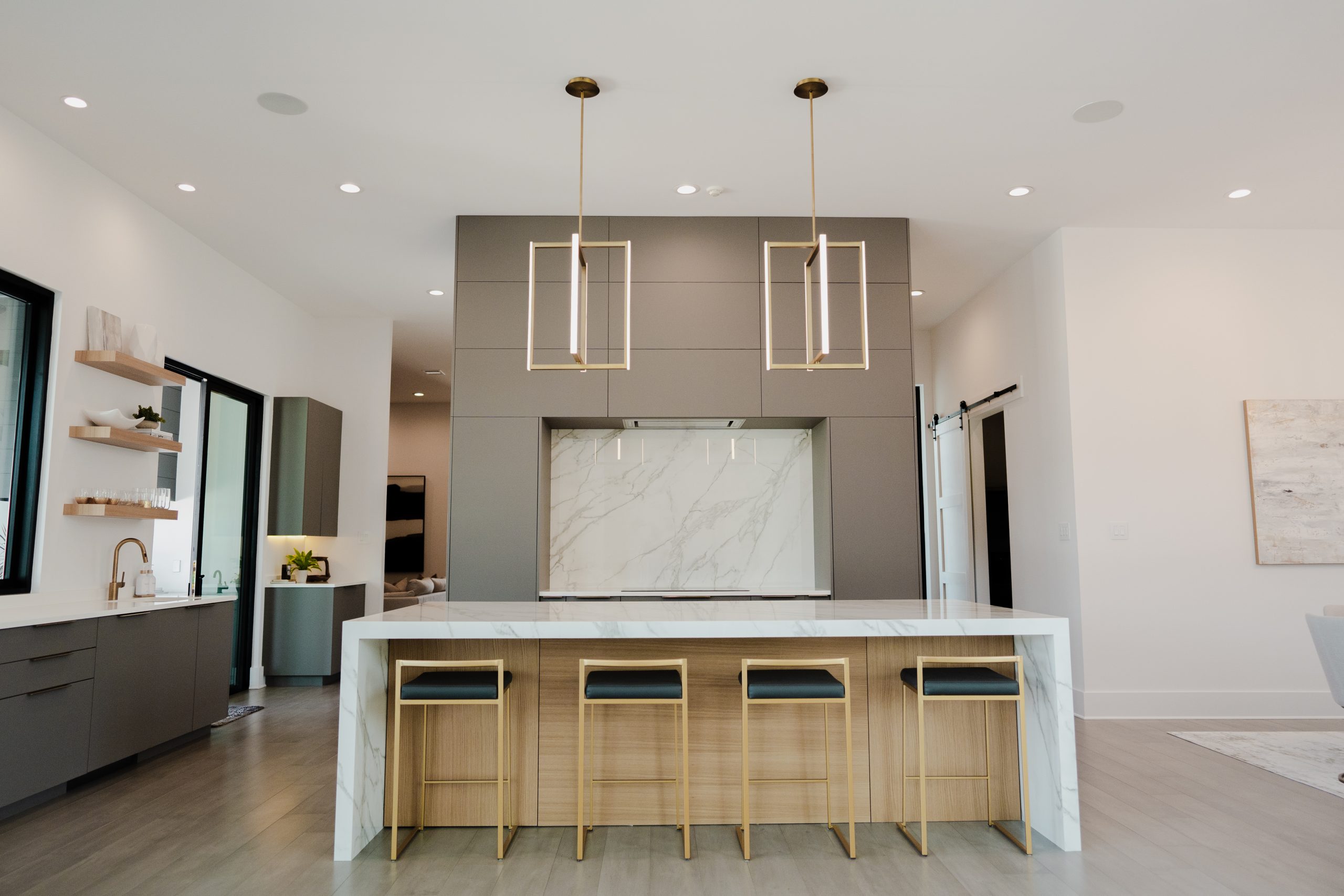
Millwork Vs. Casework: The Differences and Similarities
Architectural woodworking includes two main elements: “millwork” and “casework.” While people sometimes use these terms interchangeably, they actually serve different purposes in construction and interior design.
At Gator Millworks, we believe that understanding these differences is crucial for anyone involved in the building industry—whether you’re an architect, designer, builder or homeowner. Our expertise in both millwork and casework allows us to guide you through their unique characteristics and applications, helping you make informed decisions for your projects.
Defining Millwork
Millwork refers to any type of woodwork that is produced in a mill. This includes a wide range of building components, such as:
- Moldings: Crown moldings, baseboards and trim that enhance the aesthetic appeal of a particular space.
- Doors and Windows: Custom-built doors and window frames that fit custom design requirements.
- Paneling: Decorative wall paneling that adds character and depth to interiors.
- Staircase Components: Handrails, balusters and newel posts that are crafted for both functionality and beauty.
Millwork is typically custom-made and tailored to the specific dimensions and design preferences of a project. The materials used in millwork are often high-quality hardwoods or engineered wood products, selected for their durability and visual appeal.
Defining Casework
Casework, on the other hand, refers to the production of box-like enclosures, commonly known as cases or cabinets. These are standard items found in many settings, including:
- Kitchen Cabinets: Storage solutions for kitchens, often prefabricated and modular.
- Bathroom Vanities: Functional and decorative storage units for bathrooms.
- Office Furniture: Desks, file cabinets and shelving units designed for workspace organization.
- Retail Fixtures: Display cases and storage units for commercial environments.
- Healthcare Cabinetry: Specialized storage units for medical supplies and equipment in healthcare facilities.
Key Differences Between Millwork and Casework
While both millwork and casework are integral to interior spaces, they differ in terms of production, customization, materials and applications.
Customization and Production
Millwork is practically synonymous with customization. Every piece can be designed and crafted to meet the unique specifications of a project. This level of customization requires skilled craftsmanship to ensure that each component fits perfectly within the overall design.
Materials and Construction
The materials used in millwork are often selected for their aesthetic qualities and durability. High-quality hardwoods like oak, cherry and maple are common choices. The construction process involves precise joinery techniques and a high level of craftsmanship to achieve the desired finish and functionality.
Casework materials tend to be more varied and can include engineered wood products like plywood, MDF and particleboard. These materials are often chosen for their cost-effectiveness and ease of fabrication. The construction of casework is generally simpler and focuses on practicality and efficiency.
Applications and Functionality
Millwork is primarily used for decorative and architectural elements within a space. Its purpose is to enhance the visual appeal and add intricate details that elevate the overall design. Think of millwork as the fine details that give a room its character and elegance while still providing functionality and ease of use.
Casework is all about practicality and storage. It provides functional solutions for organizing and storing items, making it an essential component in kitchens, bathrooms, offices and commercial spaces. While aesthetics are still important, the primary focus of casework is utility.
Similarities Between Millwork and Casework
Despite their differences, millwork and casework share some common ground. Both play crucial roles in the design and functionality of interior spaces, and both require a certain level of craftsmanship and attention to detail.
Contribution to Interior Design
Both millwork and casework significantly contribute to the aesthetic and functional aspects of interior design. They define the style and usability of a space, from the ornate moldings and custom-built doors to the practical storage solutions in kitchens and offices.
Quality and Craftsmanship
High-quality millwork and casework both require skilled craftsmanship. Whether it’s the precision of joinery in a custom-built door or the precise assembly of a kitchen cabinet, attention to detail is paramount. Quality craftsmanship ensures durability and longevity, making both millwork and casework valuable investments in any building project.
Integration with Other Materials
Both millwork and casework often incorporate other materials such as glass, metal and stone. For instance, a custom-built cabinet might feature glass doors and metal handles, while a staircase might combine wooden handrails with wrought iron balusters. This integration of materials enhances the versatility and visual appeal of both millwork and casework.
Choosing Between Millwork and Casework
Deciding between millwork and casework depends on several factors, including budget, design requirements, project scope and time constraints.
Budget Considerations
Custom millwork is typically more expensive because of the level of customization and the quality of materials used. However, the investment pays off in the form of unique, high-quality pieces that add significant value and beauty to your space.
Casework is generally more budget-friendly because of its mass-produced nature and the use of cost-effective materials. It offers a practical solution for projects with tighter budgets while still providing functional and aesthetically pleasing results.
Design Requirements
If your project calls for unique, bespoke elements that reflect a specific design vision, millwork is the way to go. It allows for complete customization, enabling you to achieve a truly one-of-a-kind look.
For projects that require efficient, standardized storage solutions, casework is ideal. It offers a wide range of styles and finishes, allowing you to find options that complement your design without the need for extensive customization.
Project Scope
Millwork is suitable for projects where architectural details and craftsmanship are paramount. It’s often used in high-end residential projects, historical restorations and custom commercial spaces.
Casework is perfect for projects that require uniformity and scalability, such as commercial buildings, offices and residential developments. Its modular nature allows for quick installation and easy replication across multiple units.
Time Constraints
Custom millwork requires more time for production and installation due to its individualistic nature. Each piece is carefully crafted to meet specific design requirements, which involves detailed planning, precise execution and sometimes multiple iterations to achieve perfection. If your project timeline is flexible and allows for detailed craftsmanship, millwork is an excellent choice.
Casework is generally quicker to produce and install because it is often pre-fabricated and follows standard dimensions. This makes it an ideal solution for projects with tight deadlines or when a fast turnaround is essential. The modular nature of casework allows for efficient assembly and minimal disruption during installation.
At Gator Millworks, we understand the importance of both millwork and casework in creating beautiful, functional spaces. Each has its unique strengths and applications, and the choice between them depends on your specific needs and goals.
In the end, both millwork and casework are essential components of the building industry, each contributing in their own way to the creation of stunning, functional interiors. By understanding their differences and similarities, you can make informed decisions that best suit your project’s needs and achieve the desired outcome.
Ready to start your next project? Reach out to us with any questions you might have!




